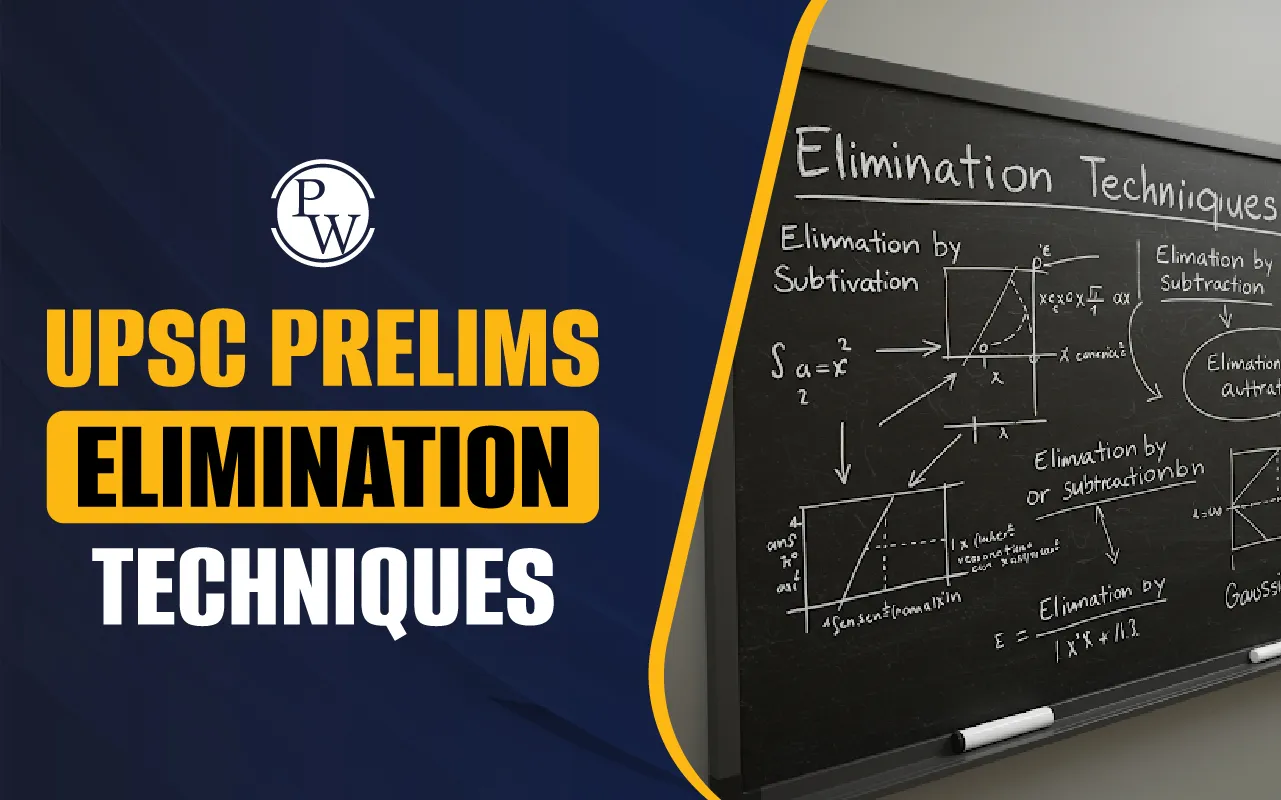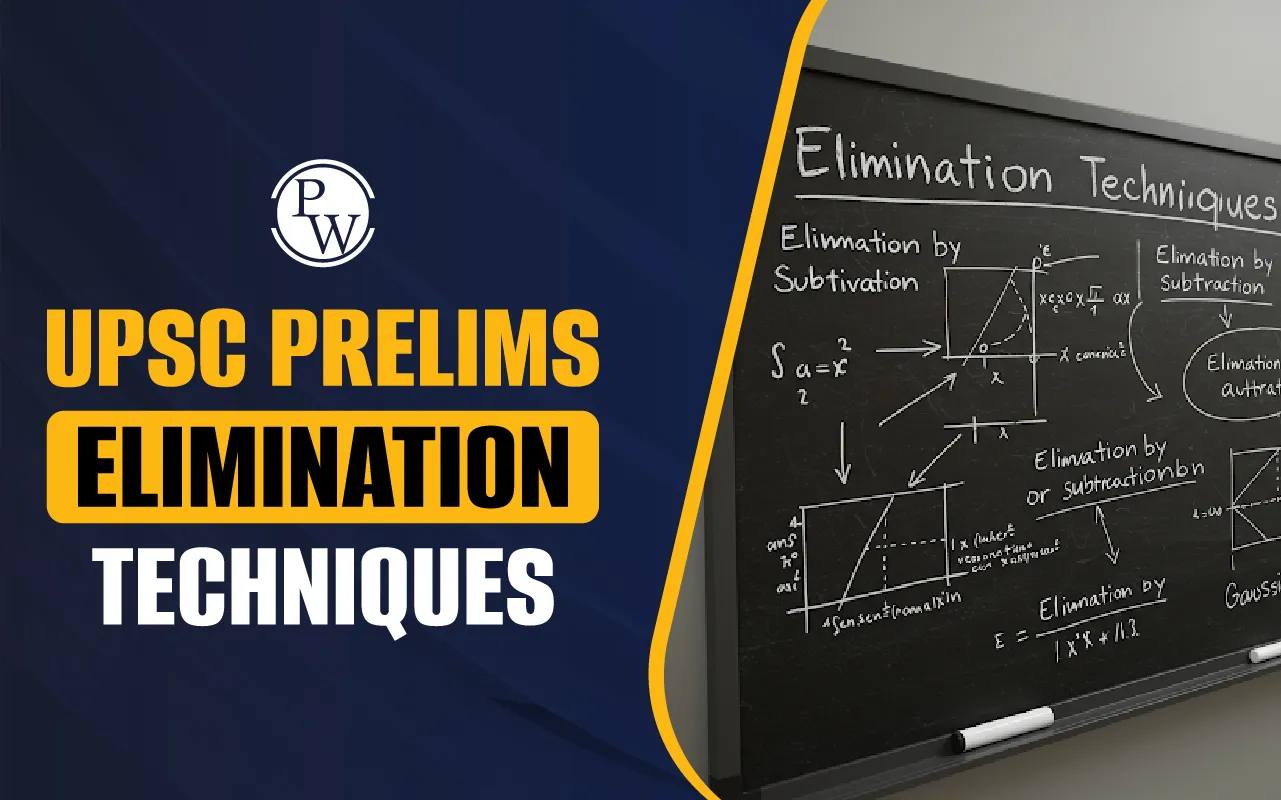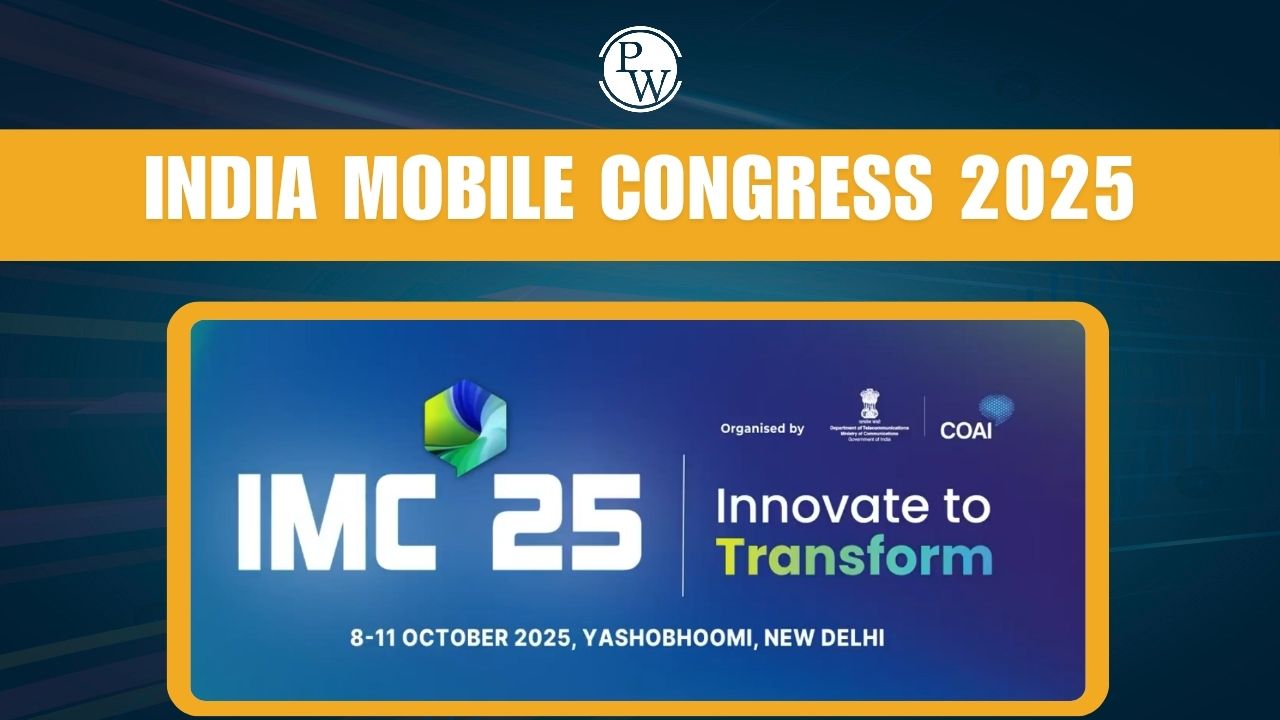

UPSC Prelims elimination techniques are an essential part of any serious UPSC aspirant’s toolkit. They are not a shortcut to avoid preparation, but a smart supplement to strong foundational study. Smart elimination techniques help reduce errors and increase your score by a few marks when you don’t know all the answers. Read on for UPSC Prelims elimination techniques!
What are UPSC Prelims Elimination Techniques?
UPSC Prelims elimination techniques refer to logical strategies used to arrive at the correct answer by eliminating wrong options, especially when a candidate is unsure of the right one. These techniques are grounded in partial knowledge, logical reasoning, current affairs familiarity, and understanding of question trends.
In the UPSC Prelims, particularly in General Studies Paper I, many questions have options that are plausible but not precise. These are designed to test a candidate’s critical thinking and ability to eliminate distractors.
With practice, awareness, and logic, the UPSC Prelims elimination techniques can add 10 to 20 valuable marks, which can be the difference between qualifying or missing the cutoff. These techniques are helpful when:
-
You can’t recall the exact answer.
-
You’ve narrowed it down to two options.
-
All options seem unfamiliar, but you have some familiarity with the context of the question.
-
You want to attempt a few more questions to beat the cutoff.
Since negative marking is involved (+2 for correct, -0.66 for incorrect), blind guessing is discouraged, but intelligent elimination helps mitigate risk and improve the score marginally.
UPSC Prelims Elimination Tricks with Examples
Let’s look at the most useful elimination tricks with real examples. These techniques are easy to use during practice and the actual exam.
1. Identify Extreme Statements
If an option uses words like “always,” “never,” “only,” “completely,” it's likely to be incorrect unless you are 100% sure of the fact.
Example: In the areas covered under the Panchayat (Extension to the Scheduled Areas) Act, 1996, what is the role/power of Gram Sabha? (UPSC CSE 2012)
-
Gram Sabha has the power to prevent alienation of land in the Scheduled Areas.
-
Gram Sabha has the ownership of minor forest produce.
-
Recommendation of Gram Sabha is required for granting prospecting licence or mining lease for any mineral in the Scheduled Areas.
Which of the statements given above is/are correct?
(a) 1 only
(b) 1 and 2 only
(c) 2 and 3 only
(d) 1, 2, and 3
Ans: B
Option 3 is an extreme statement with ‘any’, so eliminate it confidently. Now, apply basic learning from the textbook in statement option 2; the correct answer is option B.
2. Unfamiliar Options Are Often Incorrect
When you’ve prepared thoroughly for the UPSC Prelims, and you come across an option in a question that feels entirely unfamiliar, chances are it may be incorrect.
Example: In the context of India, which one of the following is the correct relationship between Rights and Duties? (UPSC CSE 2017)
A) Rights are correlative with Duties.
B) Rights are personal and hence independent of society and Duties.
C) Rights, not Duties, are important for the advancement of the personality of the citizen.
D) Duties, not Rights, are important for the stability of the State.
Ans: A
After reading standard Polity books, statements like B, C, and D feel unfamiliar or extreme. The balanced view, that Rights and Duties go hand in hand, is best captured by (A), Rights are correlative with Duties (hence correct).
3. Knowledge of Common Sense & Logic
Some options defy logic or basic common knowledge. These can be eliminated without deep subject knowledge.
Example: An increase in the Bank Rate generally indicates that the (UPSC CSE 2013)
(A) The market rate of interest is likely to fall
(B) Central Bank is no longer making loans to commercial banks
(C) Central Bank is following an easy money policy
(D) Central Bank is following a tight money policy
Correct Answer: (D)
Answer choices (C) and (D) directly contradict each other, as one is likely correct. Now apply logic: high bank rates lead to high interest rates, making loans harder to access, especially for corporates. That signals a tight money policy, so the correct answer is (D).
4. Reverse Engineering Using Options
Sometimes, by identifying one wrong statement, you can eliminate 2–3 options that include it.
Example: If a 3-statement question has 4 options like:
(a) 1 and 2
(b) 2 and 3
(c) 1 and 3
(d) All 3
If you're sure statement 2 is wrong, then eliminate (a), (b), and (d). You're left with (c), the correct one.
5. "Can" and "May" Often Signal Correct Answers
In Science & Tech questions, options with ‘can’ often indicate possibility — they’re usually correct.
Example: With reference to agricultural soils, consider the following statements: (UPSC CSE 2018)
-
A high content of organic matter in soil drastically reduces its water holding capacity.
-
Soil does not play any role in the sulphur cycle.
-
Irrigation over a period of time can contribute to the salinization of some agricultural lands.
Which of the statements given above is/are correct?
A. 1 and 2 only
B. 3 only
C. 1 and 3 only
D. 1, 2, and 3
Correct Answer: B. 3 only
In this example, the last statement, which includes "can," indicates a possibility, making it the most likely correct answer, particularly after eliminating extreme words like "drastically" and "any”.
Do Intelligent Elimination Techniques Work?
Yes, intelligent elimination techniques do work, but only if used carefully. Many toppers who cracked the UPSC Prelims admit that they couldn’t answer more than 50-55 questions with full confidence. The rest were attempted using smart elimination and logic. These techniques work when:
-
You have moderate knowledge of the topic.
-
You can identify flawed logic or extreme language.
-
You are comfortable with risk management and negative marking.
-
You are already scoring 70 to 80+ in mocks.
-
You are aiming to push from borderline to cutoff level.
However, they don’t work if:
-
You have zero familiarity with the topic.
-
You guess wildly without any logical elimination.
-
You rely on it as the only strategy instead of preparation.
So yes, these tricks increase your probability of success if you’ve prepared well and stay calm during the exam.
How to Learn Intelligent Guessing for Prelims?
Intelligent guessing is not just luck. It is a skill you can develop with regular practice. Here’s how to learn and improve intelligent guessing:
-
Practice with PYQs: Solving previous year questions (PYQs) helps you understand how UPSC frames questions and options. Learn how options are designed to confuse you, and how to eliminate the wrong ones.
-
Join Mock Tests: Take regular UPSC Prelims mock tests in exam-like conditions. After each test, analyse the questions you guessed. Learn what worked and what didn’t.
-
Create an Elimination Journal: Maintain a small notebook. Note down:
-
Types of options UPSC uses.
-
Words that make options wrong.
-
Your mistakes in intelligent guessing.
-
Review it weekly.
-
Learn to Identify Traps: Some options are close but not correct. UPSC uses terms like “may,” “can,” “should,” and “must” cleverly. Read carefully.
-
Improve Reading Comprehension: For CSAT and GS, understanding questions quickly is key. Improve reading skills to spot hints hidden in the questions.
-
Stay Updated with Basic Facts: If your base is strong, you’ll be better at eliminating false options. Revise basic facts from the NCERTs and standard books.
UPSC Prelims elimination techniques are practical tools that help you improve your Prelims score. They don’t replace preparation but act as a smart support system when you face tricky questions. Intelligent guessing, when done correctly, gives you an extra edge.
Want to improve your Prelims preparation and learn such smart strategies? Explore the UPSC Courses by Physics Wallah and boost your chances!
UPSC Prelims Elimination Techniques FAQs
What are Intelligent elimination techniques?
Are elimination techniques enough to clear UPSC Prelims?
How many questions should I attempt in Prelims using elimination?
Can intelligent guessing work without preparation?
How do I practice elimination techniques?

UPSC Coaching












